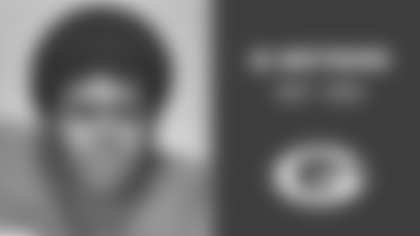At first glance, the job of a third-down running back sounds pretty simple -- take the field on third down, run a short route, and be ready to catch a pass out of the backfield if nobody is open downfield.
But the job description for a third-down back is actually far more complicated than that. In fact, the reason the job description even exists as a specialty is precisely because it's so complex.
Third down is, without question, the most complicated as well as critical down in football. The offense is trying to convert to keep its drive alive, while the defense will do whatever it takes to get the stop, and get the ball back.
As a result, defenses might employ any number of personnel packages on third down. They could go with a nickel (five defensive backs), or a dime (six DBs), three down linemen or four, or throw a blitz at the quarterback out of any alignment.
That becomes the first job of the third-down back, to recognize the defensive alignment he's up against, and figure out his role against that particular defense.
"You're going to see a lot of exotic looks from the defense, a lot of pressure packages from the defense," running backs coach Edgar Bennett said. "The third-down back has to be able to decipher all that information in a short amount of time. You want a player who can make the necessary adjustments."
Those adjustments might be picking up a blitzing linebacker or defensive back, or staying in to throw a chip block on the defense's premiere pass rusher, depending on the protection call made by the center just before the snap. Or, if the quarterback calls an audible, be ready to take a handoff on a draw, hide behind the linemen for a screen, or slip out as a safety valve to catch a dump-off pass.
Any of those things could happen on any third-down snap, and most of the time the running back doesn't know exactly what he's supposed to do until the ball is snapped.
To listen to Noah Herron, the third-year pro who has settled nicely into the role of third-down back with the Packers over the last couple of years, describe a third-down play, he is in a state of heightened alert from the moment he breaks the huddle.
"I'm listening the whole time, to the quarterback, to the center, pretty much until the ball is snapped," Herron said. "The defense can move around and switch. You have to be able to understand our scheme, protection scheme or running scheme, versus that defense - identifying who you have, who the line has, where everybody's at."
For Herron, being the third-down back also means often being the single back in the two-minute offense, when everything is happening very quickly and defenses can be equally unpredictable.
There are hand signals between the quarterback and receivers, or quick verbal commands for other players to pick up on, to call plays without a huddle. Herron knows them all, even if they don't specifically apply to him, so he can put himself in position to help out on any given play. Protecting the quarterback is always the first thought, and then the job evolves from there.
"It's kind of tedious, but at the same time, I guess it's a compliment to you as a player to get thrown into that," Herron said. "Intellectually you have to smart and sharp in order to succeed in that role."
{sportsad300}A Northwestern alum, Herron certainly has the smarts to handle it. He also has the hands to catch the ball reliably, a trait he says comes second-nature from his days playing high school baseball.
As Herron prepares for another season with that third-down role in Green Bay, he's possibly going to start at running back in the preseason finale at Tennessee on Thursday due to injuries to Vernand Morency (knee) and Brandon Jackson (concussion).
It would be the rare chance a third-down back gets to show whether he's capable of an expanded role, something Herron did last year when he had 20 carries for 106 yards as the feature back against the St. Louis Rams on Oct. 8.
Whether Thursday's mini-audition leads to a greater role for Herron remains to be seen, and the injury situation at running back will play a part. But so far, the third-down role has helped Herron get his foot in the NFL door, and for a seventh-round draft pick relegated to the Pittsburgh Steelers' practice squad in 2005, he's come a long way already.
"As a running back, you want to be the guy, but Coach (McCarthy) always talks about roles on this team," Herron said. "Right now that's where I'm fitting in, that's what I'm going to do and I think I'm doing a pretty good job so far. You just keep building off that."
Bennett did that during his own career, learning the third-down role early on while he was being used at both fullback and halfback. He said that being productive, and dependable, on third down helped grow his own confidence, as well as the confidence of his offensive mates in him before he became a more featured player.
"When it's third down, that's definitely a down and distance you want to be on the field to help your team," Bennett said.
"It's a tremendous part of the NFL these days. Teams will have a guy, that's what he excels at, that's his priority."
For now it's Herron's priority. Or more accurately his priorities, considering the numerous responsibilities at hand.
"It's really having the confidence of the quarterbacks," Herron said. "They trust me back there protecting and they trust me back there throwing the ball, and having good communication with the line.
"You have to stay focused in. You really do."














